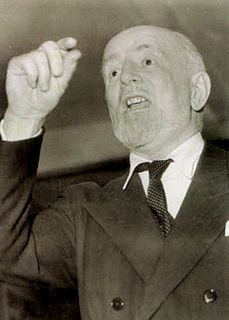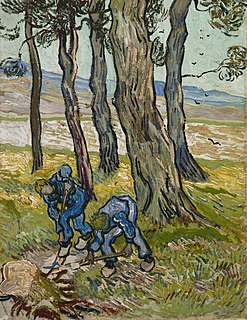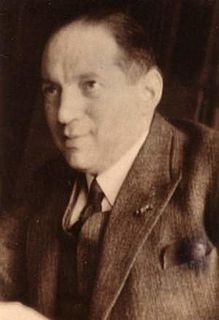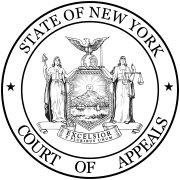
Adolph Friedrich Erdmann von Menzel was a German Realist artist noted for drawings, etchings, and paintings. Along with Caspar David Friedrich, he is considered one of the two most prominent German painters of the 19th century, and was the most successful artist of his era in Germany. First known as Adolph Menzel, he was knighted in 1898 and changed his name to Adolph von Menzel.

Otto Müller was a German painter and printmaker of the Die Brücke expressionist movement.

Nazi plunder was the stealing of art and other items which occurred as a result of the organized looting of European countries during the time of the Nazi Party in Germany. The looting of Polish and Jewish property was a key part of the Holocaust. The plundering was carried out from 1933, beginning with the seizure of the property of German Jews, until the end of World War II, particularly by military units which were known as the Kunstschutz, although most of the plunder was acquired during the war. In addition to gold, silver, and currency, cultural items of great significance were stolen, including paintings, ceramics, books, and religious treasures.

The Bavarian State Painting Collections, based in Munich, Germany, oversees artwork held by the Free State of Bavaria. It was established in 1799 as Centralgemäldegaleriedirektion. Artwork includes paintings, sculptures, photographs, video art and installation art. Pieces are on display in numerous galleries and museums throughout Bavaria.
Klaus Gunther Perls (1912–2008) was born in Berlin, Germany, where his parents were art dealers. He studied art history in Munich, but after the Nazis stopped granting degrees to Jews he moved to Basel, Switzerland and completed his studies. Here, he wrote a dissertation on the 15th-century French painter Jean Fouquet.

The Museum Georg Schäfer is a German art museum in Schweinfurt, Bavaria. Based on the private art collection of German industrialist Georg Schäfer (1896–1975), the museum primarily collects 19th-century paintings by artists from German-speaking countries.

The Gurlitt Collection was a collection of around 1,500 art works assembled by Cornelius Gurlitt, the son one of Hitler's official art dealers, Hildebrand Gurlitt (1895–1956), and which was found to have contained several artworks looted from Jews by the Nazis.

Rolf Nikolaus Cornelius Gurlitt was a German art collector. The son of Hildebrand Gurlitt, a Nazi-era dealer of looted art, Gurlitt was discovered to have concealed a stash of artworks known as the Gurlitt trove or Gurlitt Collection, several of which have been definitely proven to have been looted from Jews by Nazis.
Stephen Hahn was an American art dealer and collector. An expert on Picasso, Degas, and others, he held one of the most significant collections of twentieth century masters during his years operating the Stephen Hahn Gallery in New York City.

Dr. Hans Otto Carl Wendland was a German art dealer who was implicated in the trade in art looted by the Nazi regime during the Second World War. Among his key contacts were the French industrialist and collaborator Achille Boitel, Hugo Engel, Allen Loebl, Yves Perdoux and others in Paris and Charles Montag, Théodore Fischer, Alexander von Frey and Albert Skira in Switzerland.

Otto Kallir was an Austrian-American art historian, author, publisher and gallerist. He was awarded the Silbernes Ehrenzeichen für Verdienste um das Land Wien in 1968.

The Diggers or Two Diggers is an oil painting by Dutch artist Vincent van Gogh painted in late 1889 in Saint-Rémy-de-Provence, France. It is in the Detroit Institute of Arts (DIA), Detroit, Michigan, United States. The Diggers is sometimes called Two Diggers among Trees to distinguish it from The Diggers , 1889.
Fritz Nathan was a German-Swiss gallery owner and art dealer.

Many priceless artworks by the Dutch post-impressionist artist Vincent van Gogh were looted by Nazis during 1933–1945, mostly from Jewish collectors forced into exile or murdered.

Dead City III is an oil on wood expressionist painting by Egon Schiele from 1911. It was owned by the Viennese cabaret artist Fritz Grünbaum before he was murdered by Nazis and has been the object of high-profile disputes and court battles. Suspected by New York's District Attorney of having been looted by the Nazis, Dead City III was temporarily confiscated from the Austrian art collector Rudolf Leopold after he loaned it to a New York museum in 1998. The ownership history of the painting has been the object of high-profile court cases in which two very different versions of the painting's journey from the Jewish Holocaust victim to the Austrian art collector collide.

Walter Westfeld was a German Jewish art collector and art dealer who was plundered and murdered by Nazis.
Lea Bondi, later Lea Jaray or Lea Bondi-Jaray was an Austrian art dealer and art collector who was forced to emigrate to Great Britain due to Nazi persecution after the annexation of Austria to the Nazi German Reich. The Würthle Gallery, which she ran, was "Aryanized" by Nazis and her art collection, including the Portrait of Wally by Egon Schiele, extorted.
Alexander Vömel, or Voemel, was a German gallery owner and Nazi party member who took over the gallery of the Jewish art dealer Alfred Flechtheim when it was Aryanized in 1933.
Hugo Nathan (1861-1921) was a German banker and art collector.













